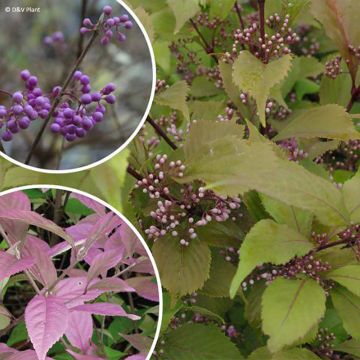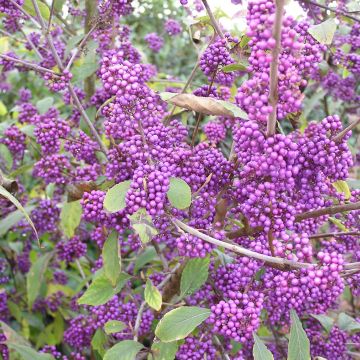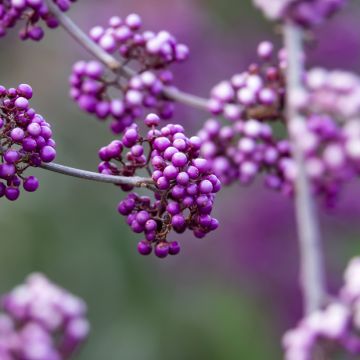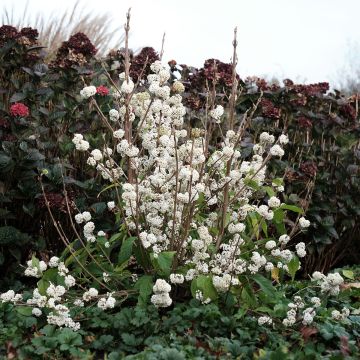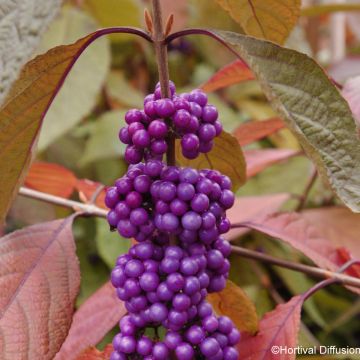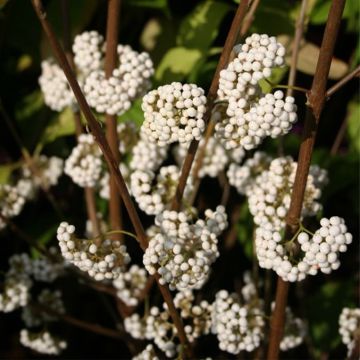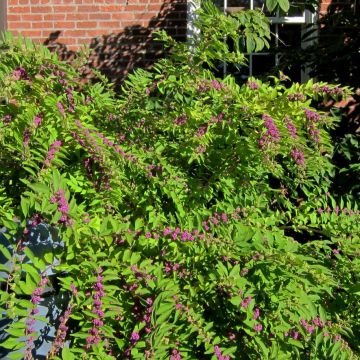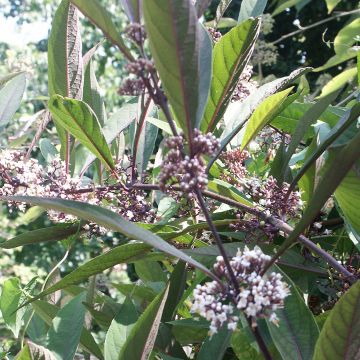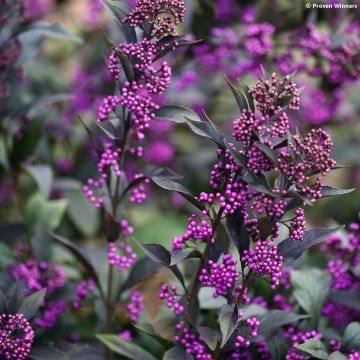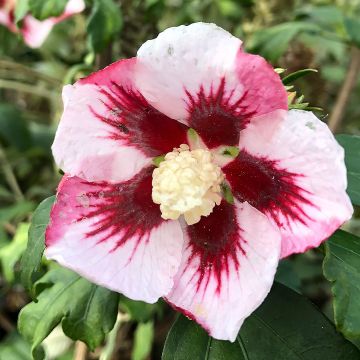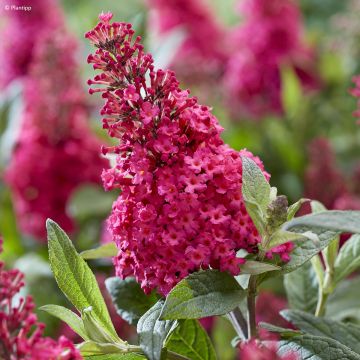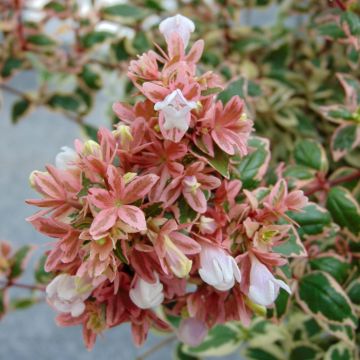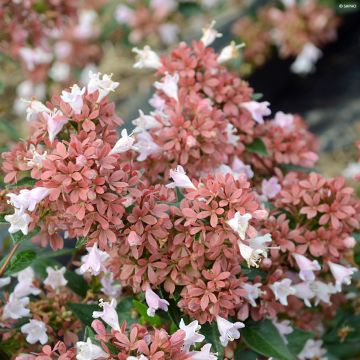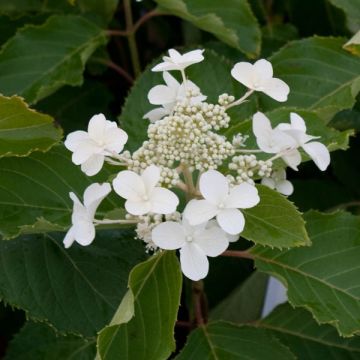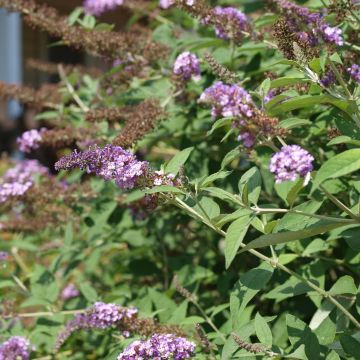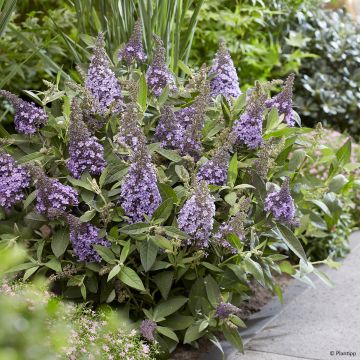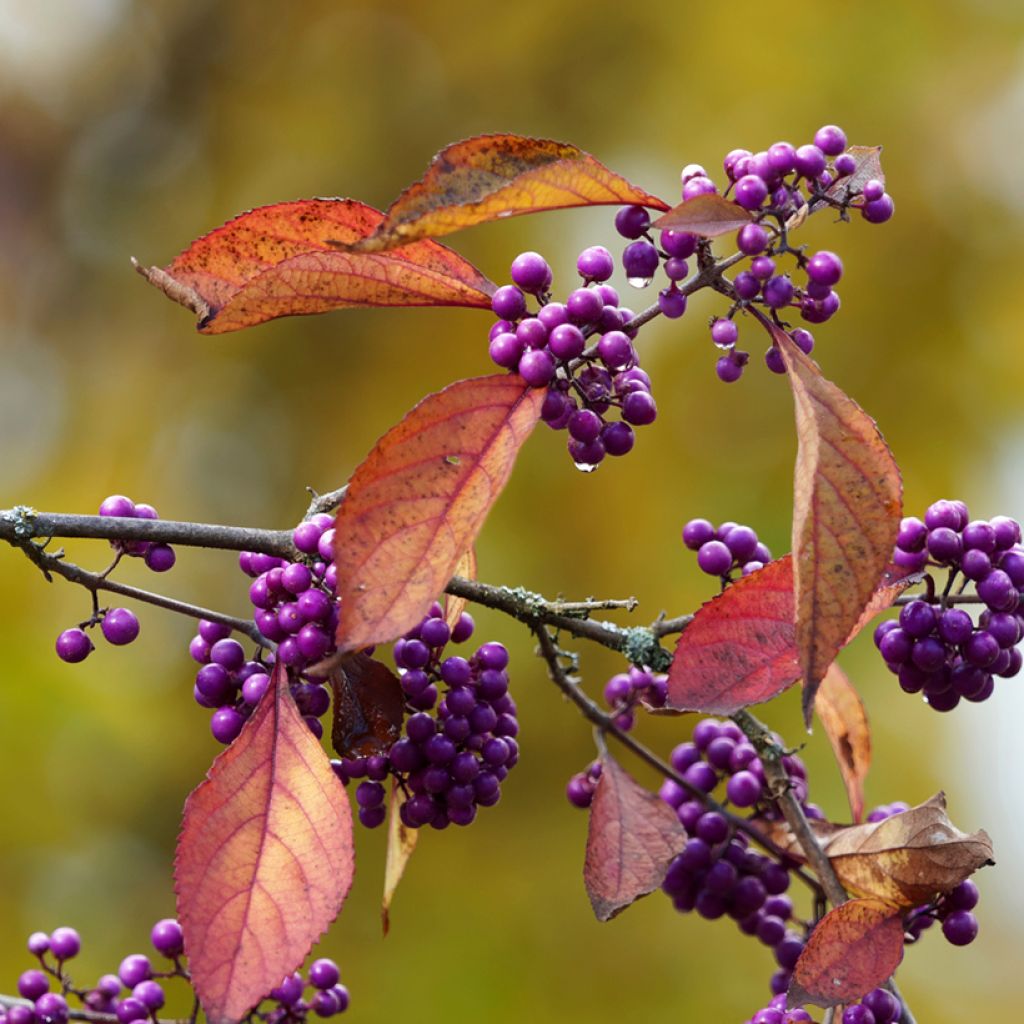

Callicarpa bodinieri Magical Purple Giant
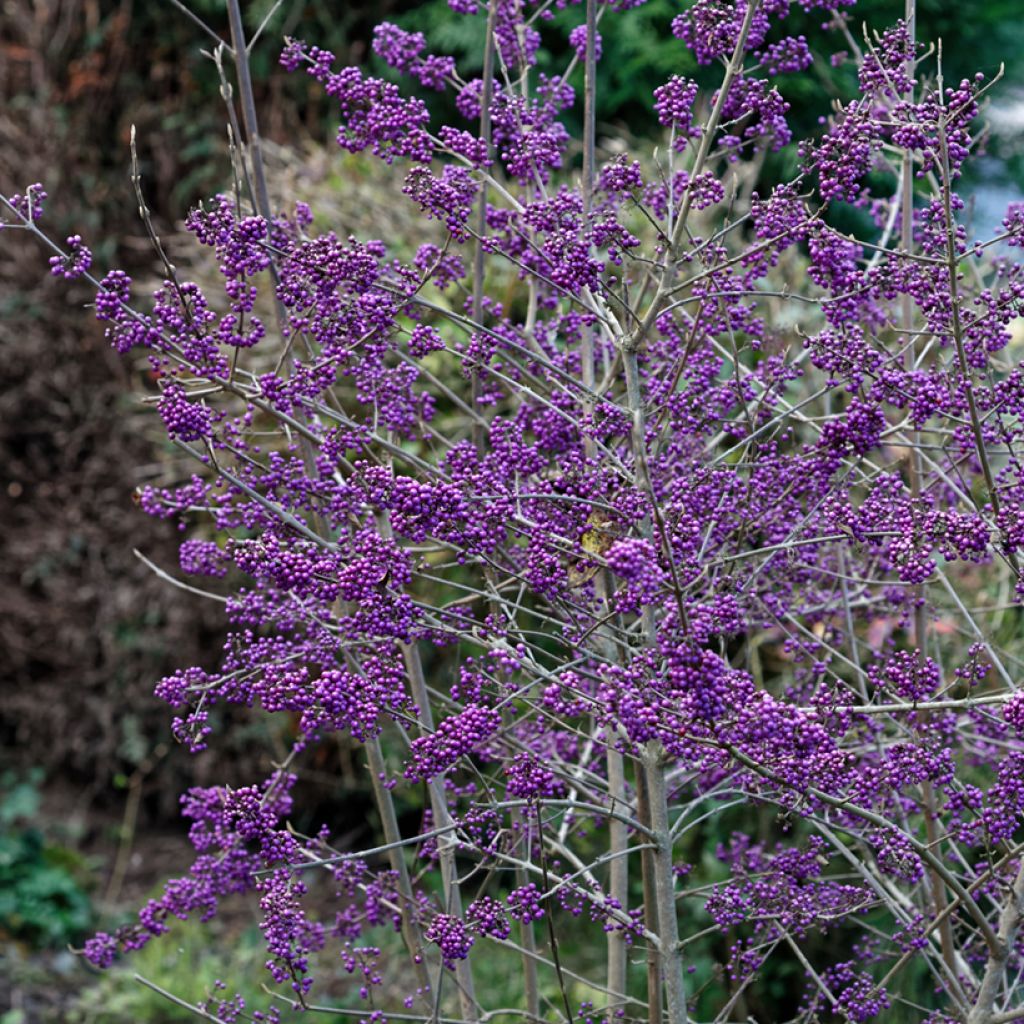

Callicarpa bodinieri Magical Purple Giant
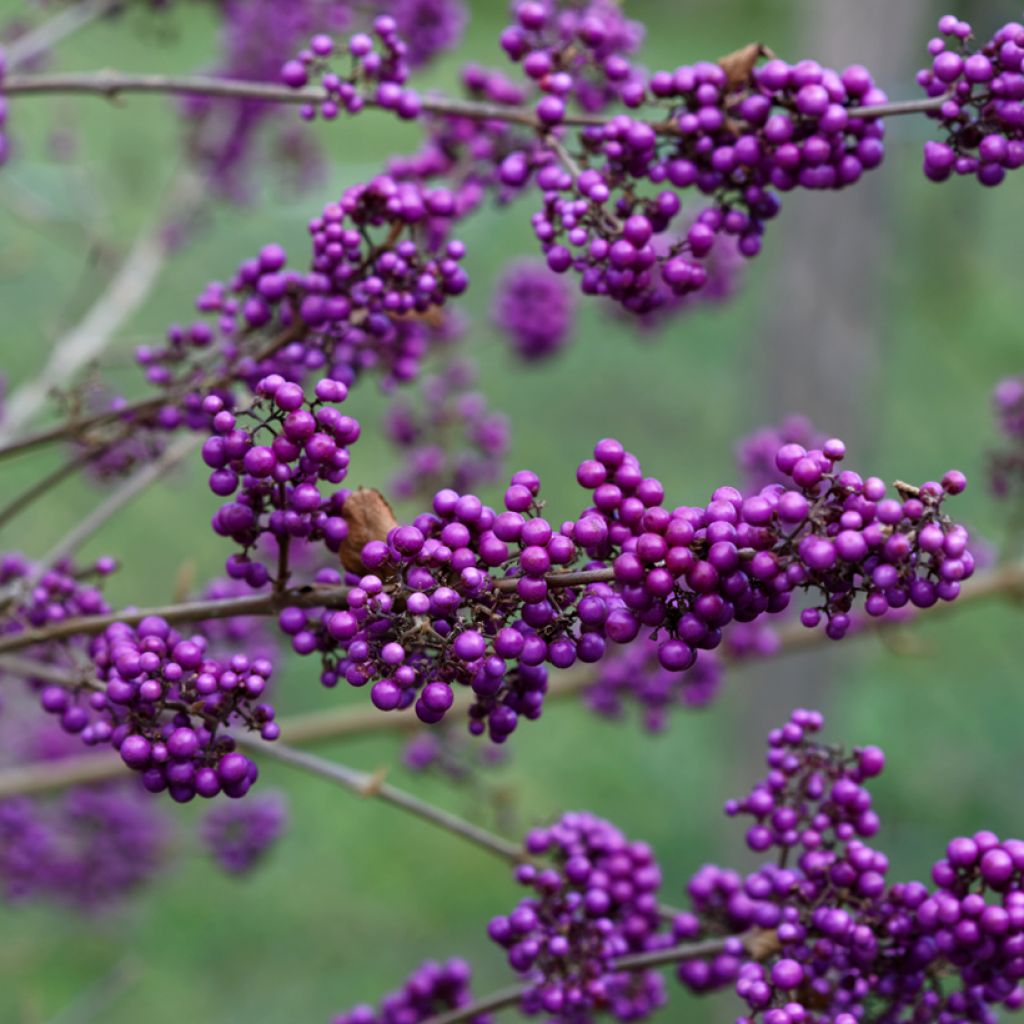

Callicarpa bodinieri Magical Purple Giant
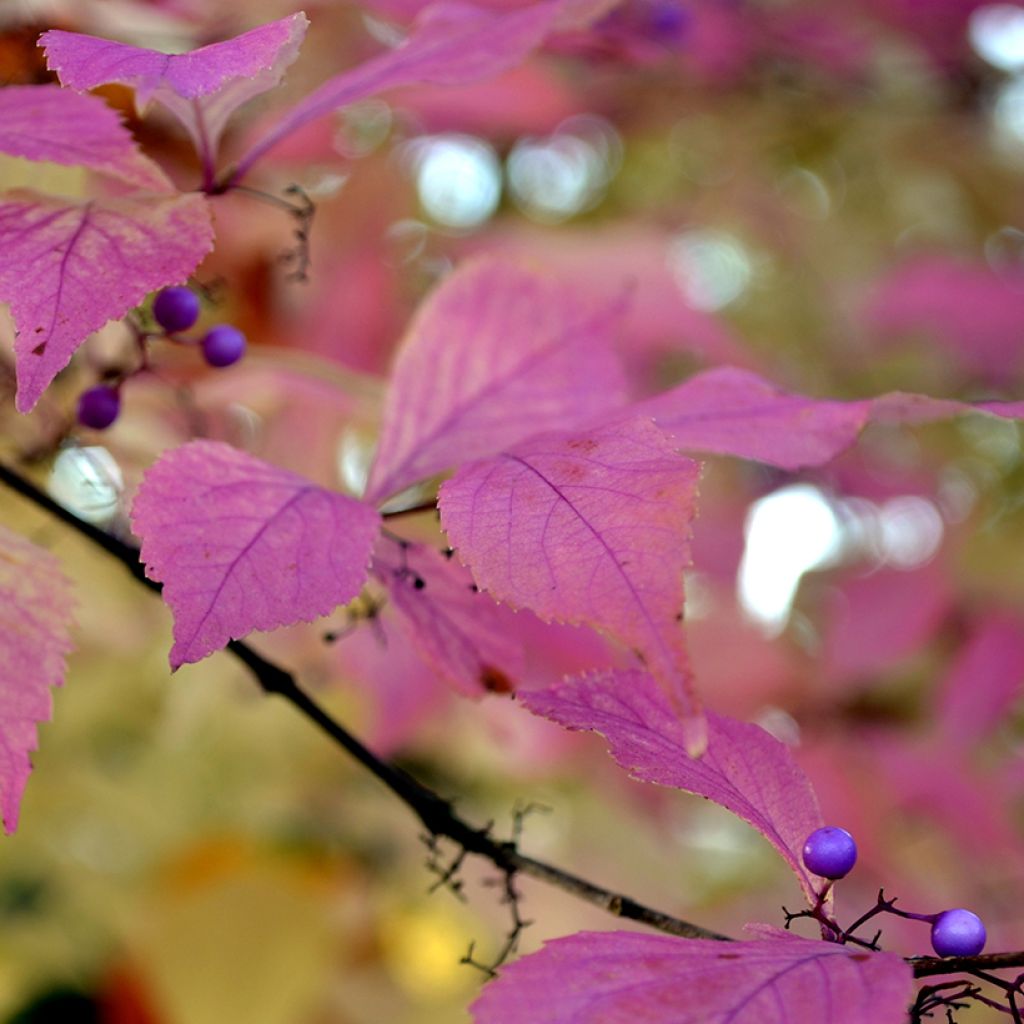

Callicarpa bodinieri Magical Purple Giant
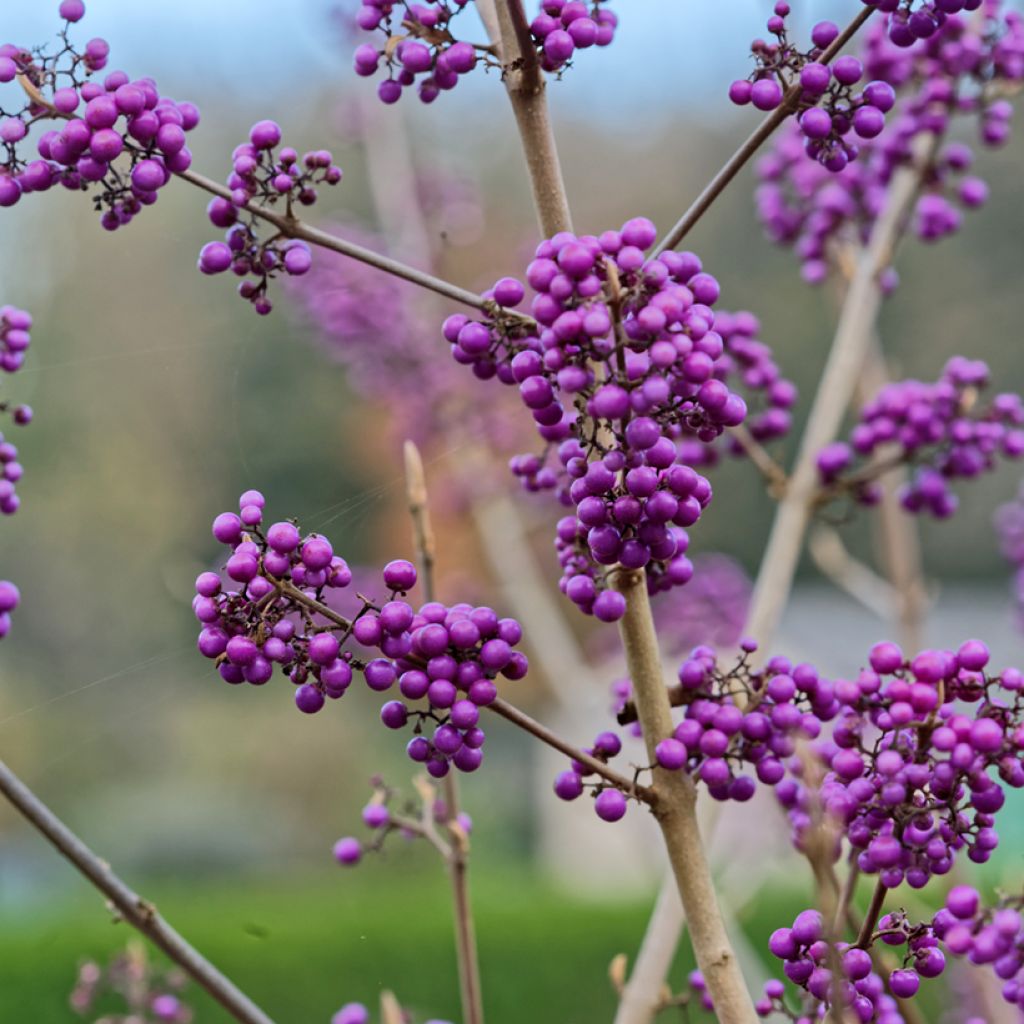

Callicarpa bodinieri Magical Purple Giant
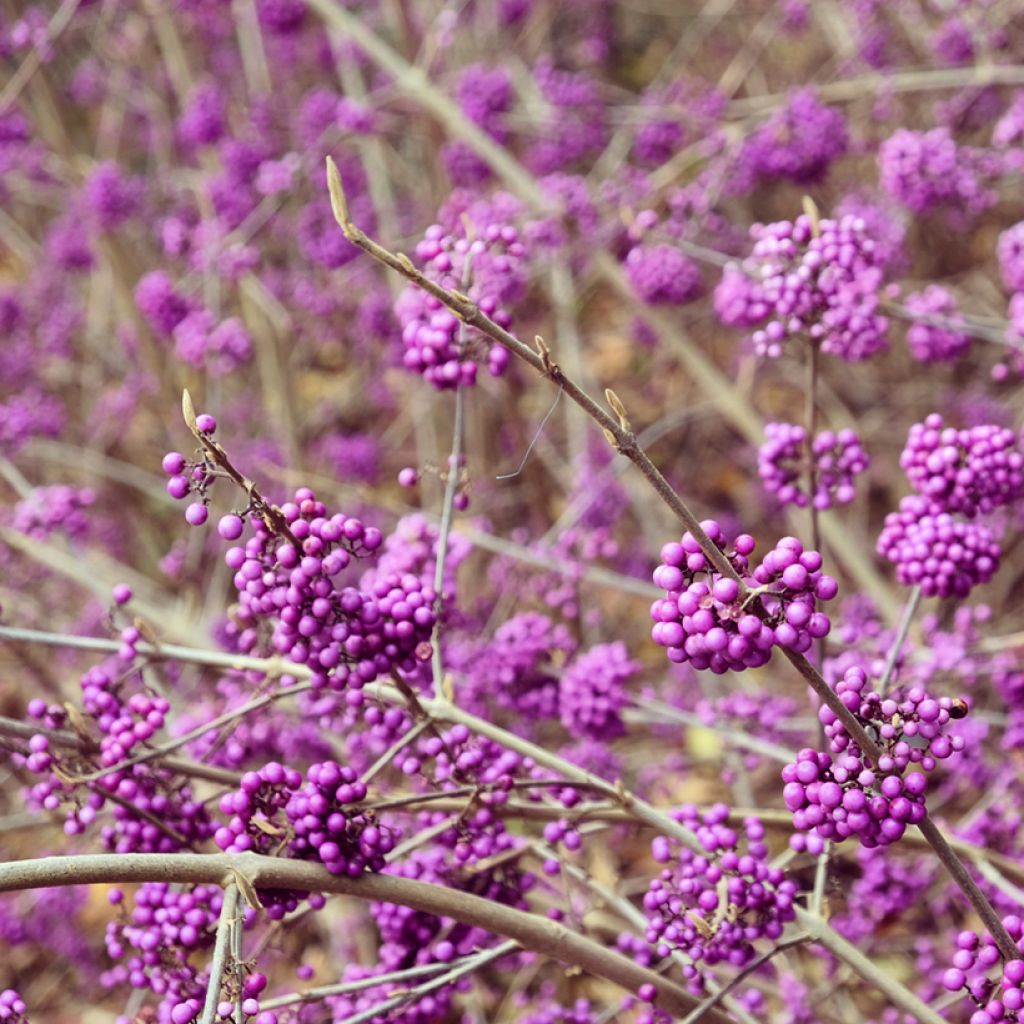

Callicarpa bodinieri Magical Purple Giant
Callicarpa bodinieri Magical Purple Giant
Callicarpa x bodinieri Magical® Purple Giant
Bodinier's Beautyberry, Beautyberry
Why not try an alternative variety in stock?
View all →This plant carries a 24 months recovery warranty
More information
We guarantee the quality of our plants for a full growing cycle, and will replace at our expense any plant that fails to recover under normal climatic and planting conditions.
From €5.90 for pickup delivery and €6.90 for home delivery
Express home delivery from €8.90.
Delivery to Corse prohibited: UE law prohibits the import of this plant from mainland France to Corse as part of the fight against Xylella fastidiosa. Please accept our sincere apologies.
More information
Does this plant fit my garden?
Set up your Plantfit profile →
Description
The Callicarpa bodinieri Magical Purple Giant is a charming bush for several reasons. While its summer flowering is quite discreet, it produces one of the most decorative fruitings. In autumn and winter, this medium-sized bush is covered with small purple berries grouped in clusters along the branches. The deciduous foliage also takes on beautiful autumnal colours, ranging from yellow to orange and red. With its nectar-producing flowers and fruits that birds feed on in winter, this bush is as ornamental as it is beneficial to biodiversity.
The Callicarpa bodinieri, once classified among the Verbenaceae (like Verbena or Lantana), is now part of the Lamiaceae family. This large plant group includes more than 200 genera and totals about 6,000 species. It includes many herbaceous plants or shrubs with fragrant foliage, such as Mint, Lavender, Lemon Balm, Oregano, Rosemary, Basil, and Savoury, which are used in our kitchens. This family also includes many ornamental plants (some of which also have foliage rich in essential oils), including Salvias, a favourite genus of collectors with more than 900 species, Ajuga, Lamium and Stachys.
Callicarpa is also a prolific genus with about 150 species, native to North America or Asia (China, Korea, Japan). Some species are commonly cultivated as ornamentals, mainly for their numerous and colourful small fruits in autumn and winter. The Callicarpa bodinieri comes from China and its species name comes from Father Bondinier, a missionary and plant explorer in this Asian country. Bodinier's Callicarpa is also affectionately called the candy bush because of its profusion of violet, appetising but inedible berries for humans.
The 'Magical Purple Giant' variety is an improvement on the Callicarpa bodinieri, even more remarkable for its multitude of purple fruits, about 4 mm (0.2 in) in diameter, produced from September to Christmas. These berries are gathered in clusters of almost 30-40 fruit, forming violet balls along the branches. They are formed from the summer flowering (June-July) in the form of small pale lilac flowers, with protruding yellow stamens, nectar-producing and gathered in 3 to 4 cm (1.2 to 1.6 in) diameter cymes. 'Magical Purple Giant' is also distinguished by its generous autumn colours, in shades of yellow-orange turning crimson red, reminiscent of the autumn foliage of the Euonymus alatus, the famous Burning Bush.
This bush will form a medium-sized clump, about 2.50 m (8 ft 2 in), or even 3 m (9 ft 10 in) tall and 1.50 to 2.30 m (4 ft 11 in to 7 ft 6 in) wide. Easy to grow in most ordinary soils, even limestone, in a sunny position, the Callicarpa can suffer from lack of water in summer if planted in dry soil. It will therefore be necessary to water it from time to time if its leaves start to droop. They will quickly return to their normal position. Once established, it is hardy (down to -20°C (-4 °F) and even lower) and may be affected by frost in its young age, but it will recover without any problems after pruning to remove the affected branches.
This Callicarpa is a charming bush, useful for wildlife and very ornamental in autumn and winter, at a time when the often grey sky will appreciate its generous colourful fruiting. Plant it in a mixed bed with other plants with spring or summer interest to enjoy it all year round. The Abeliophyllum distichum or Korean White Forsythia, underappreciated, despite its white flowering in February-March, and would be perfect for the opening of the flowering season. The superb Japanese Quince Rubra (Chaenomeles speciosa) will then take over in April and May with its dazzling red flowering, and will give you decorative yellow fruits in autumn, which will contrast nicely with the violet berries of your Callicarpa. Then it will be the turn of the Weigelas, so easy to grow and so generous in flowers at the end of spring. And in summer, the small Caryopteris Hint of Gold will offer you its beautiful bluish flowering, while its golden foliage in spring will turn to lime green during flowering.
Report an error about the product description
Plant habit
Flowering
Foliage
Botanical data
Callicarpa
x bodinieri
Magical® Purple Giant
Lamiaceae
Bodinier's Beautyberry, Beautyberry
Cultivar or hybrid
Other Callicarpa
Planting and care
The Callicarpa bodinieri Magical Purple Giant is a low-maintenance shrub that can grow in regular soil with good drainage. It can even grow in slightly chalky soil, but it needs to be deep and moist. This shrub should be planted in a place with a lot of sunshine or partial shade. Once it's mature, it's hardy, but during its first few years, it's best to protect it with mulch. If any of the branches are damaged by frost, it's recommended to prune them, as they will grow back from the base. To help with pollination and fruiting, it's best to plant this variety in groups of three. To keep it healthy, it's wise to prune at the end of winter, cutting back the branches to two-thirds of their length.
Planting period
Intended location
Care
This item has not been reviewed yet - be the first to leave a review about it.
Late-flowering shrubs
Haven't found what you were looking for?
Hardiness is the lowest winter temperature a plant can endure without suffering serious damage or even dying. However, hardiness is affected by location (a sheltered area, such as a patio), protection (winter cover) and soil type (hardiness is improved by well-drained soil).

Photo Sharing Terms & Conditions
In order to encourage gardeners to interact and share their experiences, Promesse de fleurs offers various media enabling content to be uploaded onto its Site - in particular via the ‘Photo sharing’ module.
The User agrees to refrain from:
- Posting any content that is illegal, prejudicial, insulting, racist, inciteful to hatred, revisionist, contrary to public decency, that infringes on privacy or on the privacy rights of third parties, in particular the publicity rights of persons and goods, intellectual property rights, or the right to privacy.
- Submitting content on behalf of a third party;
- Impersonate the identity of a third party and/or publish any personal information about a third party;
In general, the User undertakes to refrain from any unethical behaviour.
All Content (in particular text, comments, files, images, photos, videos, creative works, etc.), which may be subject to property or intellectual property rights, image or other private rights, shall remain the property of the User, subject to the limited rights granted by the terms of the licence granted by Promesse de fleurs as stated below. Users are at liberty to publish or not to publish such Content on the Site, notably via the ‘Photo Sharing’ facility, and accept that this Content shall be made public and freely accessible, notably on the Internet.
Users further acknowledge, undertake to have ,and guarantee that they hold all necessary rights and permissions to publish such material on the Site, in particular with regard to the legislation in force pertaining to any privacy, property, intellectual property, image, or contractual rights, or rights of any other nature. By publishing such Content on the Site, Users acknowledge accepting full liability as publishers of the Content within the meaning of the law, and grant Promesse de fleurs, free of charge, an inclusive, worldwide licence for the said Content for the entire duration of its publication, including all reproduction, representation, up/downloading, displaying, performing, transmission, and storage rights.
Users also grant permission for their name to be linked to the Content and accept that this link may not always be made available.
By engaging in posting material, Users consent to their Content becoming automatically accessible on the Internet, in particular on other sites and/or blogs and/or web pages of the Promesse de fleurs site, including in particular social pages and the Promesse de fleurs catalogue.
Users may secure the removal of entrusted content free of charge by issuing a simple request via our contact form.
The flowering period indicated on our website applies to countries and regions located in USDA zone 8 (France, the United Kingdom, Ireland, the Netherlands, etc.)
It will vary according to where you live:
- In zones 9 to 10 (Italy, Spain, Greece, etc.), flowering will occur about 2 to 4 weeks earlier.
- In zones 6 to 7 (Germany, Poland, Slovenia, and lower mountainous regions), flowering will be delayed by 2 to 3 weeks.
- In zone 5 (Central Europe, Scandinavia), blooming will be delayed by 3 to 5 weeks.
In temperate climates, pruning of spring-flowering shrubs (forsythia, spireas, etc.) should be done just after flowering.
Pruning of summer-flowering shrubs (Indian Lilac, Perovskia, etc.) can be done in winter or spring.
In cold regions as well as with frost-sensitive plants, avoid pruning too early when severe frosts may still occur.
The planting period indicated on our website applies to countries and regions located in USDA zone 8 (France, United Kingdom, Ireland, Netherlands).
It will vary according to where you live:
- In Mediterranean zones (Marseille, Madrid, Milan, etc.), autumn and winter are the best planting periods.
- In continental zones (Strasbourg, Munich, Vienna, etc.), delay planting by 2 to 3 weeks in spring and bring it forward by 2 to 4 weeks in autumn.
- In mountainous regions (the Alps, Pyrenees, Carpathians, etc.), it is best to plant in late spring (May-June) or late summer (August-September).
The harvesting period indicated on our website applies to countries and regions in USDA zone 8 (France, England, Ireland, the Netherlands).
In colder areas (Scandinavia, Poland, Austria...) fruit and vegetable harvests are likely to be delayed by 3-4 weeks.
In warmer areas (Italy, Spain, Greece, etc.), harvesting will probably take place earlier, depending on weather conditions.
The sowing periods indicated on our website apply to countries and regions within USDA Zone 8 (France, UK, Ireland, Netherlands).
In colder areas (Scandinavia, Poland, Austria...), delay any outdoor sowing by 3-4 weeks, or sow under glass.
In warmer climes (Italy, Spain, Greece, etc.), bring outdoor sowing forward by a few weeks.

































